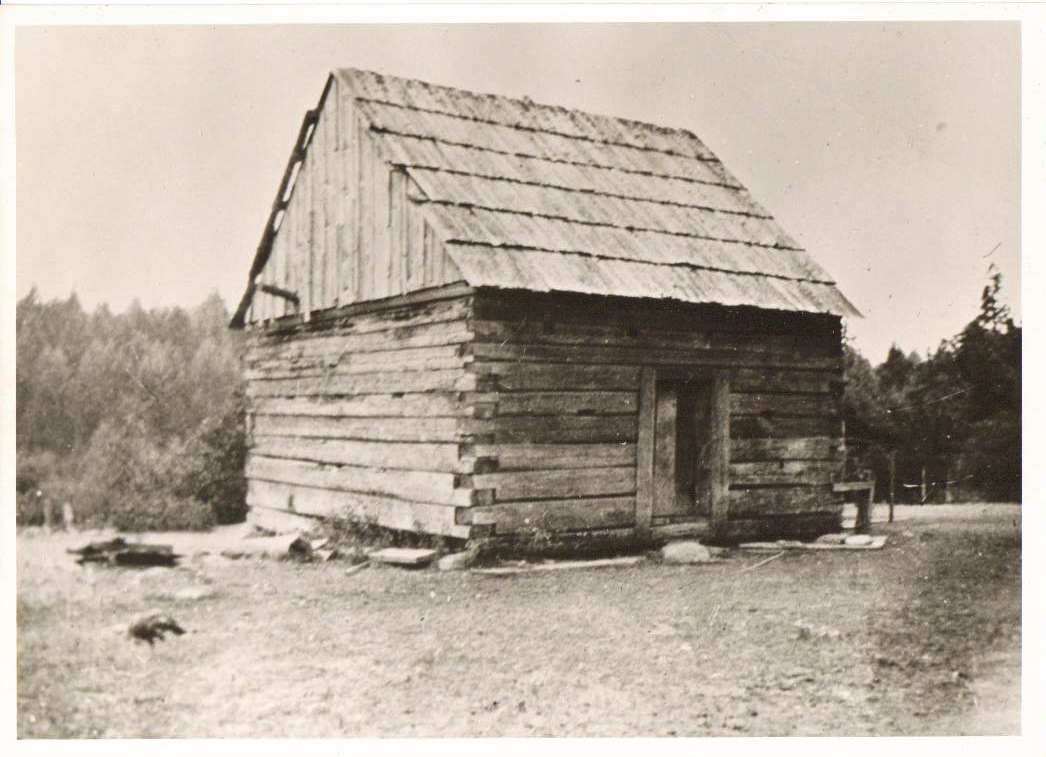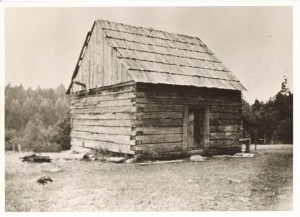
By Drew Crooks

There are many interesting place names in Thurston County. One such name is Tenalquot Prairie. This area of fertile grassland is located just east of the Deschutes River in the south central part of the county. Tenalquot is an old name dating far back into the past, and is related to a Native American legend.
The legend was told to W. P. Bonney (secretary of the Washington State Historical Society) by Henry Sicade (a noted Puyallup Indian leader). Bonney recorded the story in a 1918 letter now preserved at the Washington State History Research Center in Tacoma: “…many years ago, the mink, which was the Indians’ impersonation of the one who goes over the country seeking good locations for the habitation of men, came overland from the Columbia River. In his journey, he found many obstacles.
“There was no road or trail through the thick timber and brush, the hills that he had to cross were rough and covered with stones so that his feet became very sore. One evening he came to a beautiful prairie; it was covered with waving grass and bright flowers, throwing his hands up into the air he shouted ‘Ta-nal-cuth,” meaning ‘the best yet,’ or as Sicade says it may be literally translated ‘happy land.’” Informed by Mink, the Nisqually migrated to this pleasant locality.
The history of Tenalquot Prairie is also associated with the Hudson’s Bay Company (HBC). This British business enterprise, in the 19th century, operated a network of fur trading posts across much of what is now Canada and the Pacific Northwest. Fort Nisqually, located near the Nisqually River in present day DuPont, was the center of HBC activities in the South Puget Sound region.

Over time the Company reduced its fur trading and increased its farming activities in the area. These activities were overseen by a subsidiary of the Hudson’s Bay Company, the Puget’s Sound Agricultural Company (PSAC). HBC/PSAC oversaw the Fort Nisqually farm, and a network of farming outstations situated between the Puyallup and Nisqually Rivers.
One important HBC/PSAC outstation, or satellite farm, was established in the mid-1840s south of the Nisqually River on Tenalquot Prairie. Located at a strategic position on a major Native American trail used by the Hudson’s Bay Company, this farm had excellent pasture land. Sheep and horses thrived at the outstation. The Tenalquot Farm also proved to be a good way station for Company employees going between Fort Nisqually and places to the south (including Fort Vancouver on the Columbia River). Surviving records indicate that many Native Americans were part of the workforce at Tenalquot.
Thomas Linklater ran the outstation for the HBC/PSAC for several years in the mid-19th century.
He was born on the Orkney Islands (Scotland) and joined the HBC in 1833. For over two decades Thomas worked for the British companies. Then he came to Tenalquot in October 1849 with his wife Mary. She was the daughter of a Tsimshian chief. This Native American group lived – and continue to live – on what is now the central British Columbia coast. Edward Huggins, who worked at Fort Nisqually, in his reminiscences described Mary as “generous and kind hearted,” and recorded that she “was well liked by the old residents of Tinalquot [Tenalquot] and Chamber’s Prairie.”
Increasing numbers of American settlers put pressure on the Tenalquot Farm. It was closed by the HBC/PSAC in 1851. The British businesses concentrated their operations north of the Nisqually River. Thomas Linklater retired from the HBC/PSAC. He became an American citizen, and took a donation land claim on the site of the former Tenalquot outstation.

Thomas and Mary Linklater continued to live on Tenalquot Prairie for many years. They and their prosperous farm survived the turmoil of the Puget Sound Indian War (1855-1856) with little damage because of their good relationships with local Native Americans. The couple also kept close ties with Fort Nisqually until that trading post closed in 1870. Mary Linklater died on March 30, 1884, while Thomas passed away on February 20, 1890. Both were buried on their Tenalquot Farm.
Tenalquot Prairie remains today a peaceful productive rural area. In a way, this area can still be considered a Happy Land. It certainly has a historic name which honors the past of both Native Americans and non-Native Americans.
Further Reading:
Carpenter, Cecelia Svinth, The Nisqually, My People (Tacoma, WA: Tahoma Research Service, 2002).
Crooks, Drew W., Past Reflections: Essays on the Hudson’s Bay Company in the Southern Puget Sound Region (Tacoma, WA: Fort Nisqually Foundation, 2001).
Palmer, Gayle, and Shanna Stevenson, edited, Thurston County Place Names: A Heritage Guide (Olympia, WA: Thurston County Heritage Commission, 1992).




















































